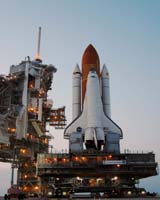Do nearly exact copies of you exist in other universes? If one or more of the multiverse hypotheses is correct, then quite possibly they do.

The universe started with an explosion called big bang which occured 14 billion years ago.Ever since the universe is expanding.It was an explosion "of" space, not an explosion "in" space.
In earlier times people thought the earth is flat.According to Ptolemy,the Earth stood at the center, surrounded by eight spheres that carried the moon, the sun, the stars and the five planets known at that time, Mercury, Venus, Mars, Jupiter and Saturn.
This is one of the analogy I can put forward.It is called Balloon analogy.A good way to help visualise the expanding universe is to compare space with the surface of an expanding balloon.COnsider a balloon with dots marked on its surface.If the balloon is blown up the distances between the dots increase in the same way as the distances between the galaxies.Universe - balloon , galaxies - dots on the balloon.The surface is homogeneous with no point which should be picked out as the centre. The centre of the balloon itself is not on the surface and should not be thought of as the centre of the universe.So to say that what is the centre of the universe becomes a little meaningless.... read this ....
1. The 2-dimensional surface of the balloon is analogous to the 3 dimensions of space.
2. The 3-dimensional space in which the balloon is embedded is not analogous to any higher dimensional physical space.
3. The centre of the balloon does not correspond to anything physical.
4. The universe may be finite in size and growing like the surface of an expanding balloon but it could also be infinite.
5. Galaxies move apart like points on the expanding balloon but the galaxies themselves do not expand because they are gravitationally bound.
Till now people go by the hubble theory that galaxies are moving far apart due to the continuing expansion force.Rest is exploration based.We cannot assume - We have to EXPLORE and then match our observations with theoretical concept.
Read More...
Summary only...










 ECLIPSE VIEWING SAFETY!
ECLIPSE VIEWING SAFETY!


 Above: Earth's "Great Ocean Conveyor Belt."
Above: Earth's "Great Ocean Conveyor Belt."
 Consider this: Signs of life are found on a planet, say, Venus (this is just an example), it definitely DOES NOT mean that we have found beings who will come around in flying saucers to say "hi". If the life forms are nothing more than worms, we
Consider this: Signs of life are found on a planet, say, Venus (this is just an example), it definitely DOES NOT mean that we have found beings who will come around in flying saucers to say "hi". If the life forms are nothing more than worms, we 
 The universe started with an explosion called big bang which occured 14 billion years ago.Ever since the universe is expanding.It was an explosion "of" space, not an explosion "in" space.
The universe started with an explosion called big bang which occured 14 billion years ago.Ever since the universe is expanding.It was an explosion "of" space, not an explosion "in" space.

